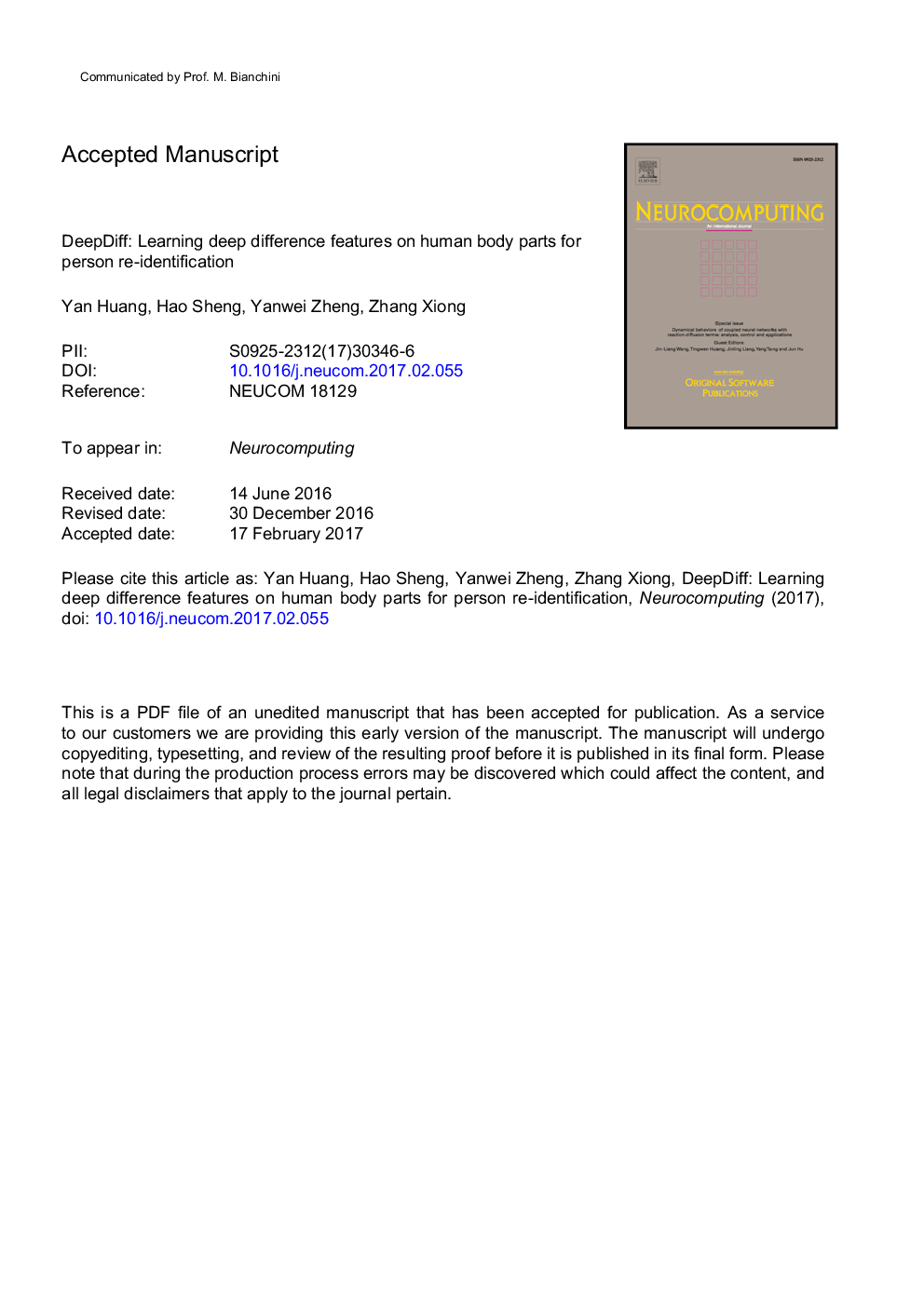| Article ID | Journal | Published Year | Pages | File Type |
|---|---|---|---|---|
| 4947572 | Neurocomputing | 2017 | 16 Pages |
Abstract
Person re-identification is an important part of smart surveillance systems which match people across different scenarios. The most challenging aspect of person re-identification is to design robust features and similarity models that reduce the impact of viewpoints, lightings, background clutters, camera settings, occlusions, and pedestrian poses under different scenarios. DeepDiff is a learning method proposed in this paper which uses deep neural networks to identify the different features of various human body parts, and then evaluate the similarities between those corresponding parts. Given those two corresponding parts, we propose three subnets that show deep difference using original data, feature maps, and spatial variations. We focus on a part-based method which introduces a pyramid partition architecture through different partition granularities on human images. In order to determine whether those two parts belong to the same identity, we utilize two combinations of our three subnets. Lastly, we present a part-based integration validation method so as to achieve better performance. The DeepDiff's effectiveness is validated on three public datasets, including: CUHK03 (labeled, detected), VIPeR and CUHK01 (100 and 486 identities settings). The experimental study shows that the proposed DeepDiff model has promising potential.
Related Topics
Physical Sciences and Engineering
Computer Science
Artificial Intelligence
Authors
Yan Huang, Hao Sheng, Yanwei Zheng, Zhang Xiong,
